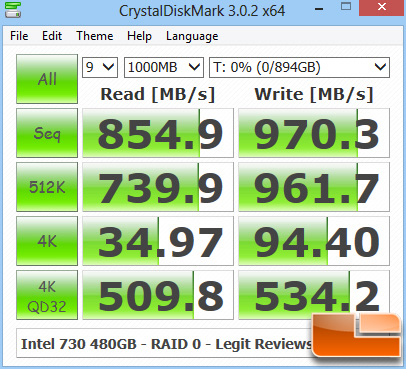
If the anomalies persisted, I would restart the computer, delete and re-create the raid and re-test everything with the same settings. In the case of anomalies in the data, the tests were run again. Finally, CrystalDiskMark was opened and the tests were run. After this, an NTFS partition was created with all default values using all of the unallocated space on the RAID.
#Raid 0 ssd benchmark windows#
I then booted into windows from a separate drive, and once booted, windows disk manager was opened where the RAID was initialized with a GUID Partition Table. To get the data, the RAIDs were created by restarting my computer and pressing ctrl+I when prompted to get into the Intel RAID configuration where I deleted the old RAID (if applicable) and created the new RAID 0 array with the drives and stripe size for the corresponding test. On top of these 3 RAID categories, I also took benchmarks of just a single M550, a single 850 EVO and a WD Black 1TB drive for reference (or for anyone looking for those numbers).
#Raid 0 ssd benchmark Pc#
Lastly I wanted to test all 4 SSDs in one large RAID 0 array since this is what I will be running on my main pc in the long run (with frequent back ups, of course) and I really wanted to push the array to the bandwidth limits of the PCH and see what the intel RAID controller can do when given an abundance of competent hardware.

While the M550 and 850 EVO perform pretty similarly in most categories, they use completely different internals, all the way to the controller, so I was interested to see how they would pair together

The two first bays with the SSDs in RAID 0 (for data).
#Raid 0 ssd benchmark software#
(I already tried with OWC RAID software with same results) I installed them using NewerTech adaptors and formatted them in RAID 0 using Disk Utility RAID assistant. Recently I bought two 1TB Samsung EVO 860 SSD to improve performance of my data drives. I'm using a ThunderBay 4 external enclosure as my main storage and backup unit.


 0 kommentar(er)
0 kommentar(er)
